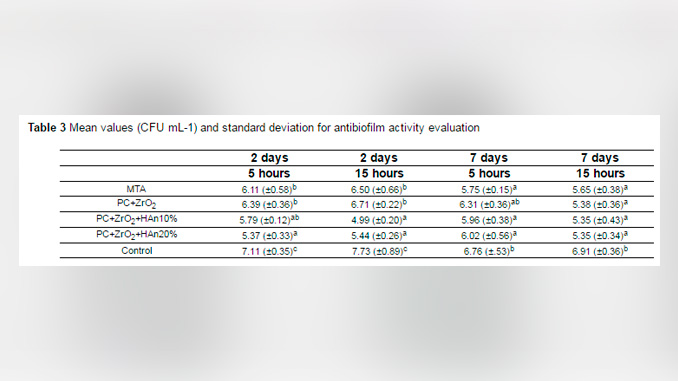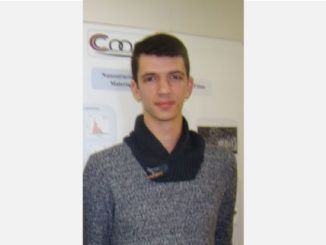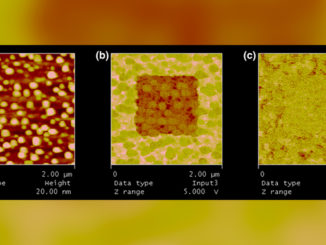
Writers:
Keywords: Physicochemical analysis; Biofilms; Enterococcus faecalis; Zirconium; Nanotechnology
Abstract
Objective
Mineral Trioxide Aggregate (MTA) is a calcium silicate cement composed of Portland cement (PC) and bismuth oxide. Hydroxyapatite has been incorporated to enhance mechanical and biological properties of dental materials. This study evaluated physicochemical and mechanical properties and antibiofilm activity of MTA and PC associated with zirconium oxide (ZrO2) and hydroxyapatite nanoparticles (HAn).
Material and Methods
White MTA (Angelus, Brazil); PC (70%)+ZrO2 (30%); PC (60%)+ZrO2 (30%)+HAn (10%); PC (50%)+ZrO2(30%)+HAn (20%) were evaluated. The pH was assessed by a digital pH-meter and solubility by mass loss. Setting time was evaluated by using Gilmore needles. Compressive strength was analyzed by mechanical test. Samples were radiographed alongside an aluminum step wedge to evaluate radiopacity. For the antibiofilm evaluation, materials were placed in direct contact with E. faecalis biofilm induced on dentine blocks. The number of colony-forming units (CFU mL-1) in the remaining biolfilm was evaluated. The results were submitted to ANOVA and the Tukey test, with 5% significance.
Results
There was no difference in pH levels of PC+ZrO2, PC+ZrO2+HAn (10%) and PC+ZrO2+HAn (20%) (p>0.05) and these cements presented higher pH levels than MTA (p<0.05). The highest solubility was observed in PC+ZrO2+HAn (10%) and PC+ZrO2+HAn (20%) (p<0.05). MTA had the shortest initial setting time (p<0.05). All the materials showed radiopacity higher than 3 mmAl. PC+ZrO2 and MTA had the highest compressive strength (p<0.05). Materials did not completely neutralize the bacterial biofilm, but the association with HAn provided greater bacterial reduction than MTA and PC+ZrO2 (p<0.05) after the post-manipulation period of 2 days.
Conclusions
The addition of HAn to PC associated with ZrO2 harmed the compressive strength and solubility. On the other hand, HAn did not change the pH and the initial setting time, but improved the radiopacity (HAn 10%), the final setting time and the E. faecalis antibiofilm activity of the cement.




